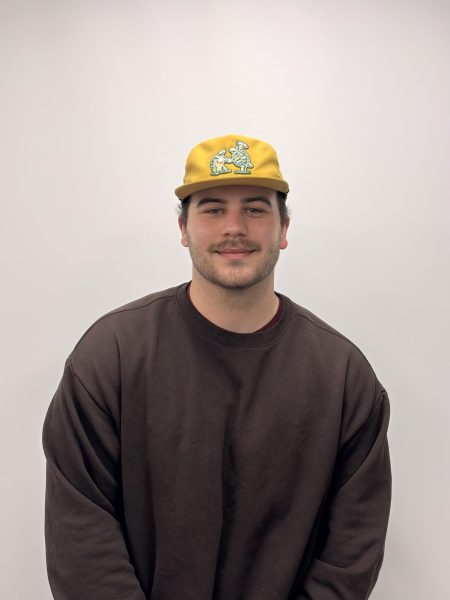Prison life through the eyes of Brother Vianney Justin
December 2, 2015
Benjamin Joe contributed this piece in collaboration with The Record and Scott Scanlon’s COM 303 class.
Brother Vianney Justin lives on Seymour Street at St. Patrick’s Friary, where he shuttles the families of the incarcerated to Attica Prison.
Baptized as Edward, Justin wanted to be involved with the church since sixth grade. He was inspired by his order’s patron saint, which he read about around that time.
Failing the requirements to become a priest, he studied nursing and got permission to become a missionary in Bolivia. Once there, he taught religion to a largely illiterate audience.
“The government didn’t like us very much. They considered us subversive and they considered the Bible to be subversive,” he said.
Vianney taught the people that they had rights and couldn’t be disappeared, couldn’t be falsely imprisoned, and that was the law. Many of the people he taught became political and tensions rose, but that’s not all.
“In Bolivia, our parish was located near an island prison camp and there we used to take soap and toothbrush and toothpaste and clean clothing to them,” he said. “The men there weren’t allowed to wear pants because they didn’t want them to escape and if they tried to swim they’d be shot by those in the tower.”
He worked there for nine years.
Justin continued his ministry in Washington, D.C., where he worked in prisons with men who had AIDS. Later he worked with the homeless in Virginia. In 2002, Justin came to Buffalo where Sister Karen Klimczak ran a program for prisoners. She was eventually strangled by one of her own prisoners transitioning to life on the outside
Vianney worked with her and was a driver for the families who wanted to see their relatives in prison.
“Today we only do FRP visits which are family reunion visits to the prisons. So they can stay two overnights with their husband or father and interact as a family unit,” he said, “and give men a light at the end of the tunnel so they don’t do something stupid to prolong their sentence.”
Vianney was overwhelmed by the walls of Attica. He had to go through three locked gates to get in or get out.
“It made me a little wobbly in the knees,” he said.
The Friary was originally a place where transitioning prisoners were able to live, but today this is done at a shelter on Abbott Road.
“They stay for about six months to a year to get them into a good foundation to not go back in,” he said. “They were doing better than some of the government agencies were.”
In “The Poor Get Prison Justin,” writers Karen Dolan and Jodi Carr said that the poor, especially those of African or Hispanic descent, were targeted by our judicial system to spend more time in prison. In their study, researchers find that many people are
harassed with tickets and minor offenses that they cannot pay. Afterwards, fees for such services as probation, and illegibility for services like food stamps, promote an inability to survive without going back to prison. They also wrote that from school age on, the inhabitants of inner city neighborhoods are “pipe-lined” to become offenders.
Vianney pointed to many qualifying aspects that land individuals in prison. He tells a story about one man who shot a man while trying to rob a liquor store. The shooter is now doing well. He said that there’s a stigma against those who have been in prison and it’s hard to find a job. He also pointed out that in places like Sweden, police don’t wear guns.
People from other countries “feel we have this John Wayne thing,” he said. “Sister Karen taught compassion, dialogue and communication. She tried to turn that around to peace and understanding of people.
“Make me an instrument of your peace, where there is hatred let me sow love, it’s sort of a way of being,” he said.
More information about St. Patrick’s Friary can be found at www.facebook.com/stpatrickfriarybuffalo.
email: [email protected]



